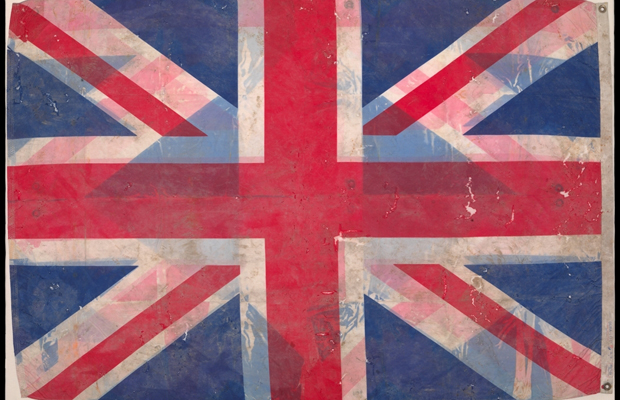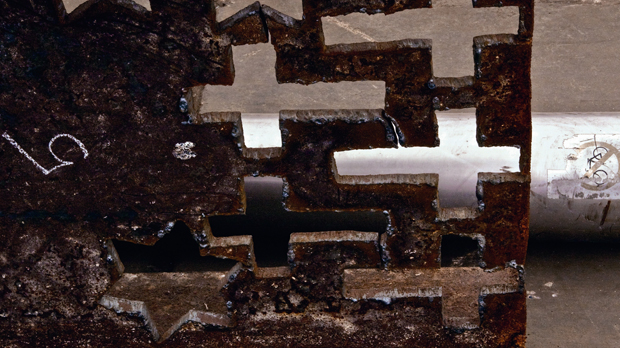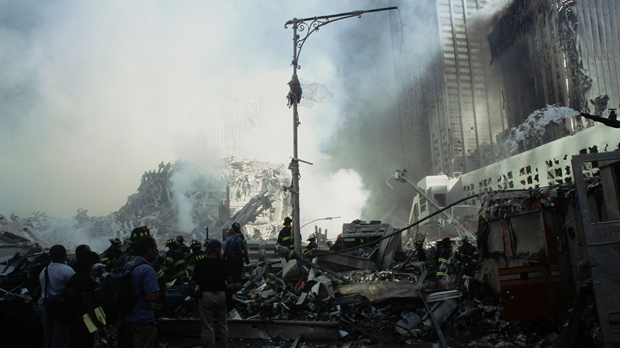‘Survival and identity’ emerge in debris of 9/11
What survives in a catastrophic terror strike? Scraps of paper, twisted girders, a flag? Channel 4 News examines a collection of artefacts from Ground Zero brought together by artist Francesc Torres.

From the personal belongings of victims to the steel girders that once supported New York’s towering World Trade Center, the work of Spanish-American artist Francesc Torres reflects on both the emotional and physical legacy of 9/11.
The artefacts and photographs amassed for “Memory Remains” cast new light on objects found at Ground Zero and later stored in Hangar 17 at JFK International Airport.
The exhibits are going on display at the Imperial War Museum, in London and in Manchester. Imperial War Museum North’s exhibition focuses on a Union flag recovered from the wreckage of the Twin Towers and a seven-metre section of steel. In London, the focus is on Torres’s personal response to the atrocity.
Head of Collections Roger Tolson spoke to Channel 4 News about a project which “symbolises survival and identity”.
He said: “In the Manchester exhibition both the flag and section of steel are significant.
“The steel work, which goes on display in October, is a visual metaphor for the violence, impact and force of the attacks.
“With the British Union flag we ask ‘What was it?’ ‘Whose was it?’ ‘How did it get out?’

(British Union Jack flag recovered from the wreckage of the World Trade Center, New York. Imperial War Museum)
“It symbolises survival and identity and suggests that 9/11 was an international event and was not purely an attack on the US. Firstly, a range of nationalities died, including 60 or 70 British people. And then within months it was followed by a series of global events, involving the UK – British and US forces were at war in Afghanistan and Iraq. The flag is a marker and indicator of the global scale and scope of the attacks.
“It is surprising something so fragile survived. It shows that what survives and who survives is unpredictable.”
More: Jon Snow blogs on his visit to Ground Zero a month after the 9/11 attacks
In the London exhibition the standout photographs are of the composites – the floors welded together with small fragments of paper attached.
Tolson said: “Intense heat and sheer pressure compacted together material that would have been several metres high. It has gone down to a globule of matter. But bits of paper survived and attached themselves to the structures. How did that happen?”
He is saying that what survives is random, extraordinary and complex and can’t be understood. Roger Tolson
“Torres talks about human memory and human activity going on despite these catastrophic events.
“We see this in the individual bits of paper that were discovered and in a Torres photograph containing a pair of spectacles. They were barely damaged by the impact, whereas steel in the Twin Towers were twisted out of shape.”

(During recovery at site ironworkers would cut religious and other symbols as keepsakes. Imperial War Museum/Francesc Torres)
‘What survives is random’
He explains: “So what Torres is saying is that what survives is random, extraordinary and complex and can’t be understood. This suggests we can’t understand the attacks, no matter how much we think about it and how hard we try to get into the mindsets of the attackers.
“There is still an element of shock.”
One of the Torres photographs features religious symbols cut out of steel remnants by Ground Zero site workers, which they gave to the friends and families of 9/11 victims, as a way of comforting them.

(Raw rusted steel from World Trade Center ruins thought to be beams from external walls. Imperial War Museum/Francesc Torres)
Tolson told Channel 4 News that the artist highlights this because it shows the interaction that took place between the two groups and it is all about the memory of individuals.
“The workers were supposed to get all of the steel out of the site but amid this activity they tried to find meaning. He suggests this is part of the way people process events.
So do the exhibitions conjure up a huge sense of loss or do they say more about the victims’ personal stories?
“What you are left with in Hangar 17 include pieces of building material, shop stock, notebooks and filing cabinets from the Twin Towers. This is just a small fraction of what was left on the site,” says Tolson.

(Spotlight Ground Zero NY after 9/11. Courtesy of Yasuhide Joju and Collection 911 Memorial Museum)
“We are left with empty spaces, a scattering of objects from what was an enormous complex. What about the stories of the individuals who worked there? It symbolises the fact that a powerful economy can be reduced to fragments.
“The flag in Spotlight (pictured) symbolises the fact that 9/11 was an international event. Individuals around the world know about it and have been affected by it. The world has changed for ever – there is enhanced international travel security and Iraqis and Afghans have been affected by the wars that have taken place in their countries as a consequence.”
Tolson added that the Manchester show is largely an attempt to understand and interpret 9/11. But the London show is all about Torres’s personal response to 9/11.
“He shows his photographs and makes a statement on what he saw in Hangar 17. He has not arranged the exhibition but has simply commented on the objects and the way things have been arranged in the warehouse. He was a few hundred yards away the Twin Towers when the 9/11 attacks happened.
“So the show also contains his personal reflection on his memory of the event.”
